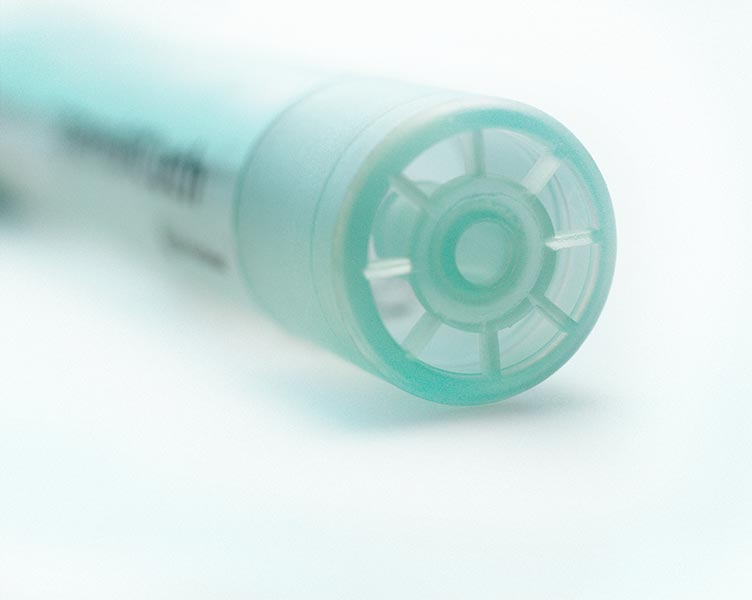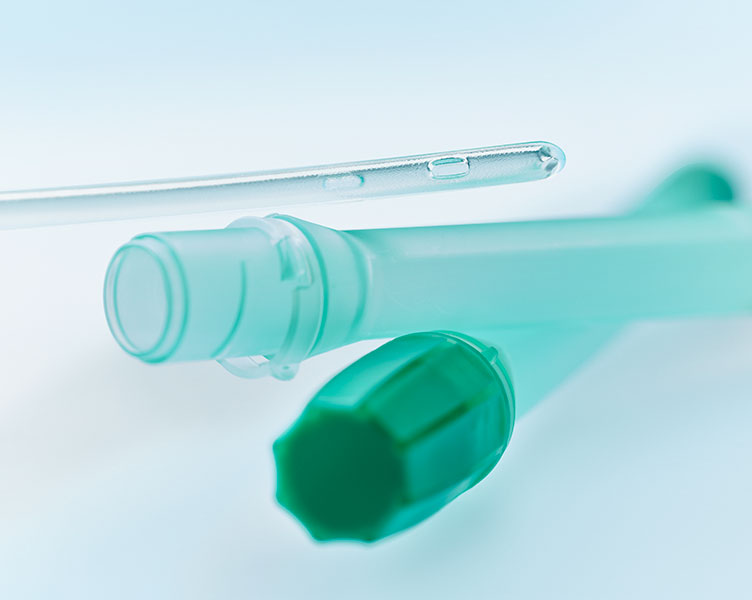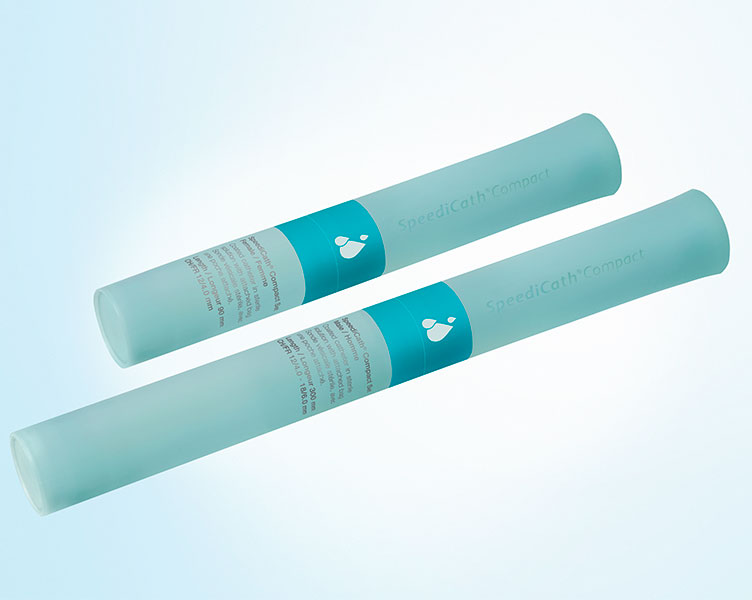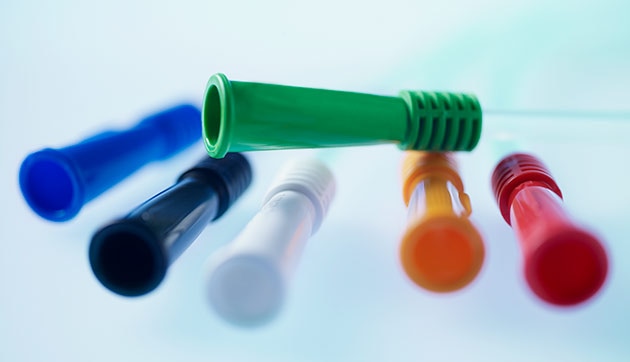
A catheter is a plastic tube with eyelets (drainage holes), which is used to drain urine from the bladder. Catheters can be both permanent (indwelling catheters) and intermittent. The intermittent catheter - which is considered the preferred method - is inserted at regular intervals and removed immediately after the bladder has been fully emptied.
Uncoated and coated catheters
Catheters should be lubricated to minimize the friction between the catheter and the tissue in the urethra. You can get catheters that come with either a gel or a special surface treatment that activates with water (hydrophilic coating). The most advanced catheters are already immersed in water, and can be used straight from the packaging.
What length to choose?
In general, your catheter needs to be a bit longer than the urethra, which is 15-20 cm in men and 3-4 cm in women. This is because the catheter eyelets are not placed at the tip of the catheter. You can get both standard and compact sizes. Men with an enlarged prostate might benefit from a slightly curved tip version (Tiemann).
How to find the right size catheter (diameter)?
It is important to select the right size to obtain optimal bladder drainage. Most adults start with a catheter size 12-14 Ch (1 Ch = 0.33 mm diameter). Your doctor or nurse can help you deciding on the right one for you.
The tube
Catheters are made of different materials, and some of these include:
- PVC, which is quite common in medical devices. It contains softeners (phthalates), which can potentially be harmful both to your body and to the environment.
- Silicone, which is a very flexible material by nature and has no need for plastic softeners.
- PU (polyurethane) is becoming increasingly popular because it’s firm yet flexible and doesn’t contain plastic softeners.
A slightly firmer catheter can be easier to insert, which is especially relevant if you have limited hand dexterity. When choosing a catheter reassure yourself with your doctor and nurse that the material used doesn’t compromise your health (like PVC- and phthalates), and is convenient for you to use.
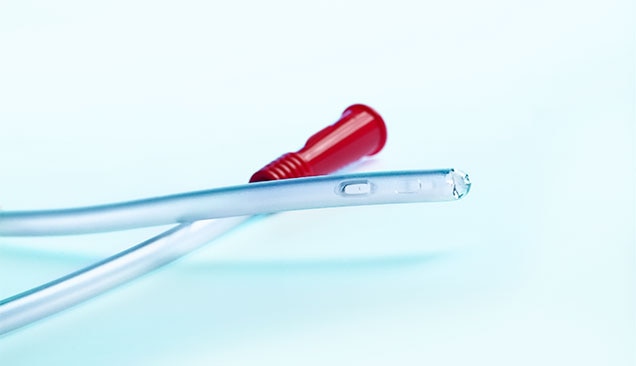
The eyelets (drainage holes)
The catheter typically has 2 holes punched into the end of the tube. Once the catheter reaches the bladder, urine will run into these holes and drain the bladder. To minimise the risk of damage to the urethra look for eyelets that are polished and coated.
Catheter connector/ handle
The connector at the end of the catheter allows the attachment of a urine bag, in case you can’t get to a toilet.
If you have any questions to our products, please feel free to call us.

